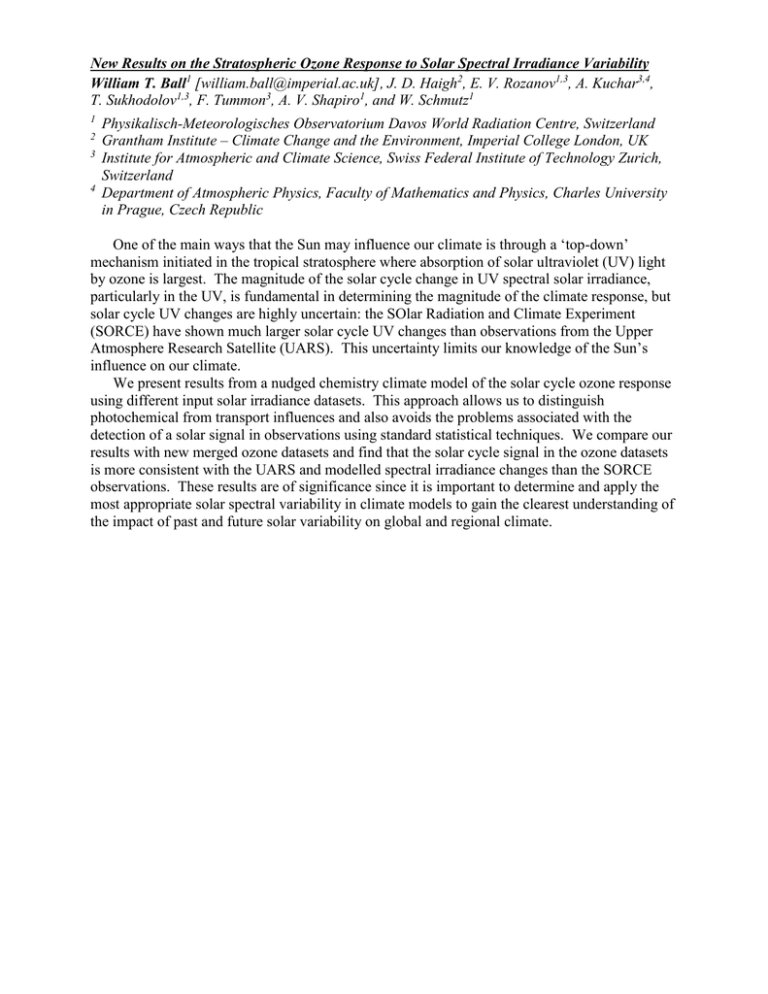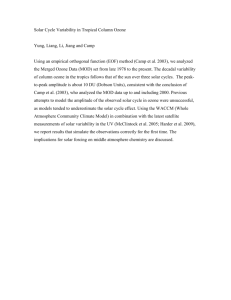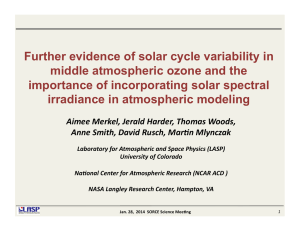New Results on the Stratospheric Ozone Response to Solar Spectral... William T. Ball
advertisement

New Results on the Stratospheric Ozone Response to Solar Spectral Irradiance Variability William T. Ball1 [william.ball@imperial.ac.uk], J. D. Haigh2, E. V. Rozanov1,3, A. Kuchar3,4, T. Sukhodolov1,3, F. Tummon3, A. V. Shapiro1, and W. Schmutz1 1 2 3 4 Physikalisch-Meteorologisches Observatorium Davos World Radiation Centre, Switzerland Grantham Institute – Climate Change and the Environment, Imperial College London, UK Institute for Atmospheric and Climate Science, Swiss Federal Institute of Technology Zurich, Switzerland Department of Atmospheric Physics, Faculty of Mathematics and Physics, Charles University in Prague, Czech Republic One of the main ways that the Sun may influence our climate is through a ‘top-down’ mechanism initiated in the tropical stratosphere where absorption of solar ultraviolet (UV) light by ozone is largest. The magnitude of the solar cycle change in UV spectral solar irradiance, particularly in the UV, is fundamental in determining the magnitude of the climate response, but solar cycle UV changes are highly uncertain: the SOlar Radiation and Climate Experiment (SORCE) have shown much larger solar cycle UV changes than observations from the Upper Atmosphere Research Satellite (UARS). This uncertainty limits our knowledge of the Sun’s influence on our climate. We present results from a nudged chemistry climate model of the solar cycle ozone response using different input solar irradiance datasets. This approach allows us to distinguish photochemical from transport influences and also avoids the problems associated with the detection of a solar signal in observations using standard statistical techniques. We compare our results with new merged ozone datasets and find that the solar cycle signal in the ozone datasets is more consistent with the UARS and modelled spectral irradiance changes than the SORCE observations. These results are of significance since it is important to determine and apply the most appropriate solar spectral variability in climate models to gain the clearest understanding of the impact of past and future solar variability on global and regional climate.



